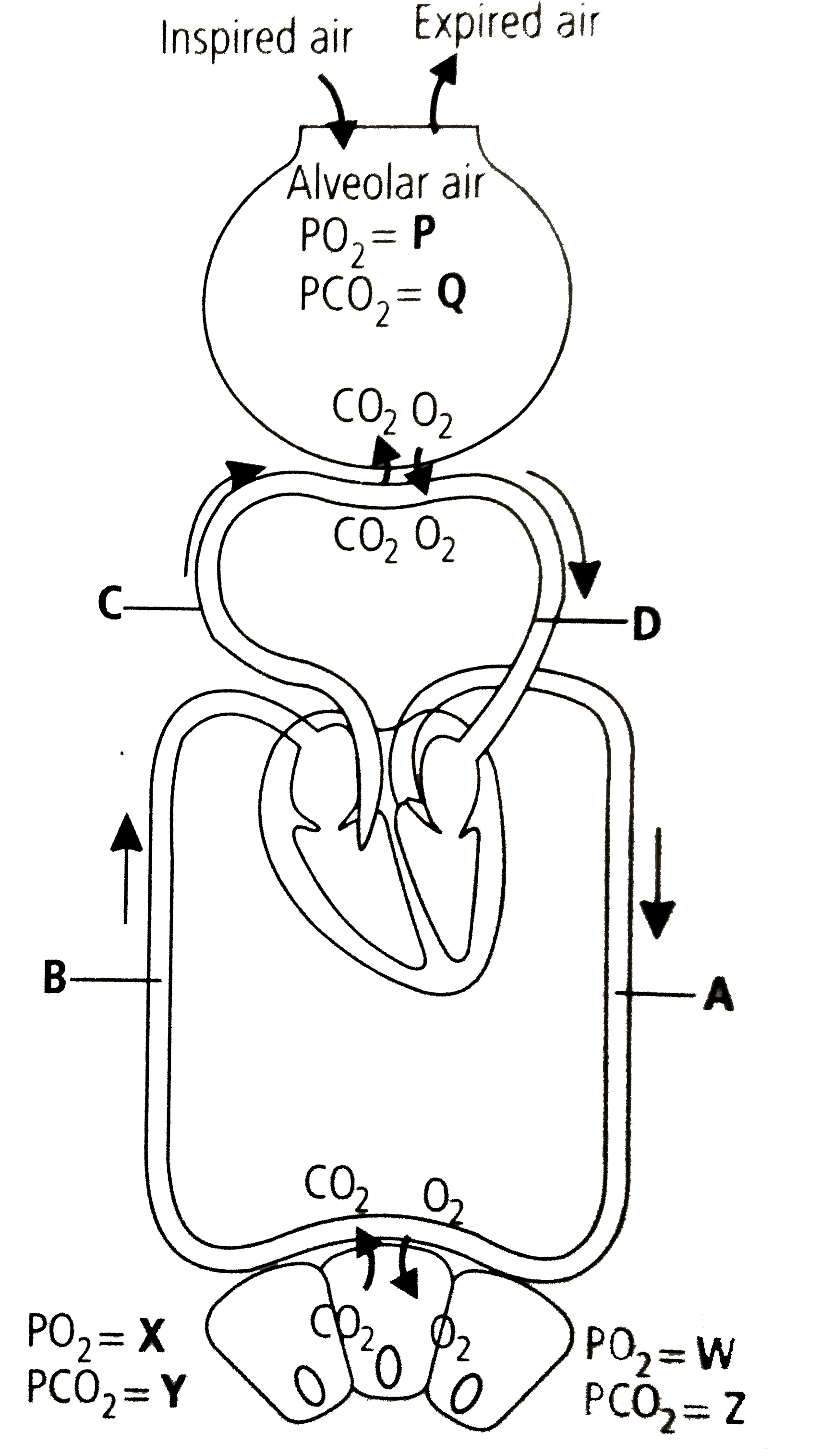Compared to the interstitial fluid that bathes active muscle cells, blood reaching that tissue in arteries has a :
higher PO2
higher PCO2
greater hydrogencarbonate concentration
lower pH
The correct Answer is:A
To answer the question "Compared to the interstitial fluid that bathes active muscle cells, blood reaching that tissue in arteries has a:", we will analyze the differences between the blood in the arteries and the interstitial fluid surrounding the muscle cells.
1. Understanding the Components:
- Blood in Arteries: This blood is oxygenated and rich in nutrients. It is pumped from the heart to various tissues, including active muscle cells.
- Interstitial Fluid: This fluid surrounds the muscle cells and provides them with nutrients and oxygen. It is derived from blood but has a different composition.
2. Oxygen Content:
- Blood in the arteries is rich in oxygen because it has just come from the lungs where oxygen is absorbed.
- In contrast, the interstitial fluid has a lower concentration of oxygen because it has already delivered some of its oxygen to the muscle cells for metabolic processes.
3. Carbon Dioxide Levels:
- The blood in the arteries has lower levels of carbon dioxide since it is freshly oxygenated.
- The interstitial fluid, on the other hand, may have higher levels of carbon dioxide due to the metabolic activity of the muscle cells, which produce carbon dioxide as a waste product.
4. Nutrient Content:
- The blood in the arteries also carries nutrients that are necessary for muscle function.
- The interstitial fluid may contain fewer nutrients as they are utilized by the muscle cells.
5. Conclusion:
- Therefore, compared to the interstitial fluid that bathes active muscle cells, blood reaching that tissue in arteries has a higher concentration of oxygen and lower levels of carbon dioxide.
Final Answer:
The correct answer is that blood in the arteries is oxygen-rich compared to the interstitial fluid.
---
- Blood in Arteries: This blood is oxygenated and rich in nutrients. It is pumped from the heart to various tissues, including active muscle cells.
- Interstitial Fluid: This fluid surrounds the muscle cells and provides them with nutrients and oxygen. It is derived from blood but has a different composition.
- Blood in the arteries is rich in oxygen because it has just come from the lungs where oxygen is absorbed.
- In contrast, the interstitial fluid has a lower concentration of oxygen because it has already delivered some of its oxygen to the muscle cells for metabolic processes.
- The blood in the arteries has lower levels of carbon dioxide since it is freshly oxygenated.
- The interstitial fluid, on the other hand, may have higher levels of carbon dioxide due to the metabolic activity of the muscle cells, which produce carbon dioxide as a waste product.
- The blood in the arteries also carries nutrients that are necessary for muscle function.
- The interstitial fluid may contain fewer nutrients as they are utilized by the muscle cells.
- Therefore, compared to the interstitial fluid that bathes active muscle cells, blood reaching that tissue in arteries has a higher concentration of oxygen and lower levels of carbon dioxide.
The correct answer is that blood in the arteries is oxygen-rich compared to the interstitial fluid.
Similar Questions
Knowledge Check
- Question 1 - Select One
Compared to blood our lymph has
Aplasma without proteinsBmore WBCs and no RBCsCmore RBCs and less WBCsDno plasma - Question 2 - Select One
Given below are four statements (i-iv) regarding human blood circulatory system
(i) Arteries are thick-walled and have narrow lumen as compared to veins
(ii) Angina is acute chest pain when the blood circulation to the brain is reduced
(iii) Persons with blood group AB can donate blood to any person with any blood group under ABO system
(iv) Calcium ions play a very important role in blood clotting
Which two of the above statements are correct ?A(i) and (iv)B(i) and (ii)C(ii) and (iii)D(iii) and (iv) - Question 3 - Select One

Durning strenuous exercise, the muscle interstitial fluid pO2 falls to 20 mm Hg. The oxygen delivered by blood that passes through the exercising muscle tissus will beAfive times as much as normalBdouble to the normalCthree times as much as normalDnone of these.
Compared to blood our lymph has
View SolutionGiven below are four statements (i-iv) regarding human blood circulatory system
(i) Arteries are thick-walled and have narrow lumen as compared to veins
(ii) Angina is acute chest pain when the blood circulation to the brain is reduced
(iii) Persons with blood group AB can donate blood to any person with any blood group under ABO system
(iv) Calcium ions play a very important role in blood clotting
Which two of the above statements are correct ?View SolutionAssertion Arteries possess smooth muslces on their walls.
Reason These smooth muscles help in regulating blood volume flowing through a tissue of organ.View SolutionThe most active phagocytic white blood cells are
View SolutionMost active phagocytic white blood cells are
View Solution

